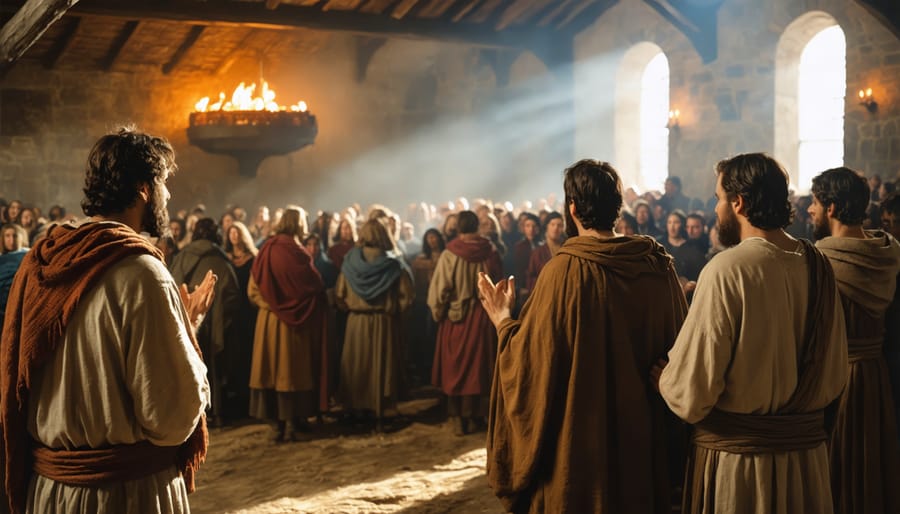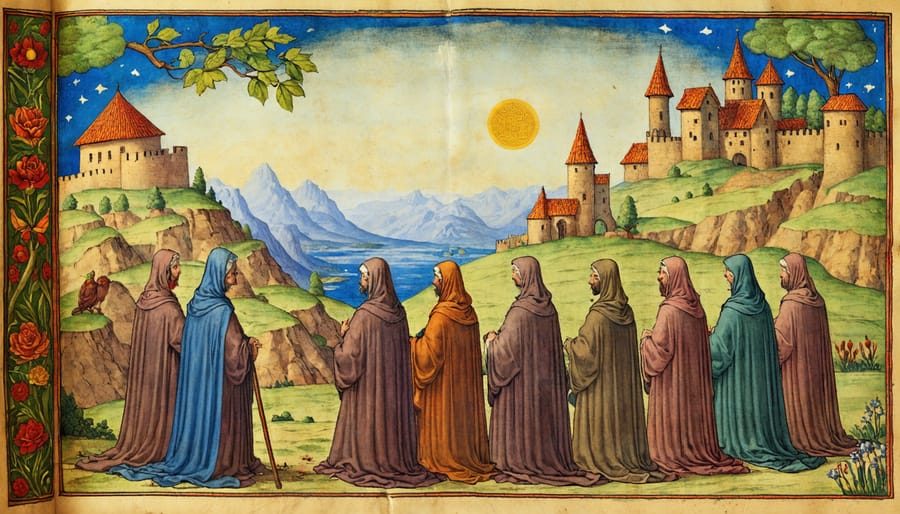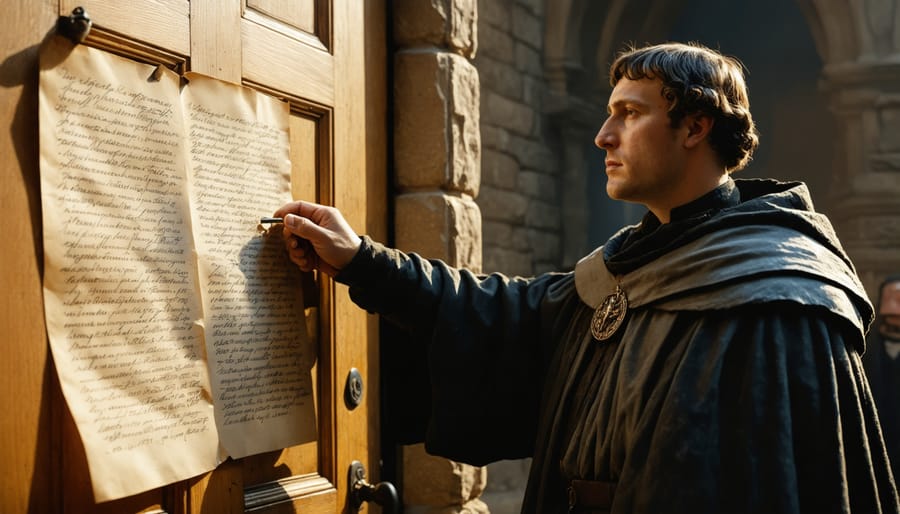Embark on a riveting journey through the triumphs and trials that shaped the Christian church. From its humble beginnings in Jerusalem to its global influence today, explore the key events, movements, and figures that defined each era. Witness how early believers spread the Gospel amidst persecution, how the church navigated political and theological challenges, and how reformers fought to restore biblical truth. Discover the rich tapestry of traditions that emerged and the unifying faith that endured. This compelling overview of church history will deepen your appreciation for your faith heritage and inspire you with the resilience of the body of Christ through the ages. Gain invaluable insights into the people and principles that shaped Christianity as you know it. Embark on this illuminating exploration of your spiritual legacy.
The Early Church (30-600 AD)
Pentecost and the Apostolic Era
The day of Pentecost marked the birth of the church, as the Holy Spirit descended upon the apostles, empowering them to boldly proclaim the gospel message. Peter’s powerful sermon led to the conversion of 3,000 people, igniting the spread of Christianity. The apostles, filled with the Holy Spirit, performed miracles and wonders, attracting many to the faith. Despite facing persecution, they courageously shared the good news, establishing churches and appointing leaders. The apostle Paul’s dramatic conversion and subsequent missionary journeys played a pivotal role in spreading the gospel throughout the Roman Empire. The early church flourished as believers devoted themselves to teaching, fellowship, prayer, and breaking of bread, demonstrating the transformative power of the gospel. This period laid the foundation for the church’s growth and impact, as the apostles faithfully carried out Christ’s Great Commission to make disciples of all nations.

Persecution and Early Martyrs
The early church faced intense persecution from the Roman Empire, with believers facing imprisonment, torture, and even death for their faith. Despite these challenges, the church continued to grow and spread the Gospel message. Inspiring stories of early Christian martyrs, such as Stephen, the first martyr stoned to death for his faith, and Polycarp, the elderly bishop of Smyrna who refused to deny Christ, demonstrate the unwavering commitment and courage of these early believers. Their sacrifices and steadfast faith in the face of adversity serve as a powerful testimony to the truth of the Gospel and the strength found in Christ.
Establishment of Doctrine and Practices
In the early centuries, the church established essential doctrines and practices that would shape Christianity for generations. Through councils and creeds, leaders defined key beliefs about the nature of God, Jesus, and salvation. The early church doctrines and practices laid the foundation for the Trinity, Christ’s divinity and humanity, and the centrality of grace. Worship practices, such as the Eucharist and baptism, became integral to the faith. Monastic traditions emerged, emphasizing prayer, simplicity, and service. These developments unified believers and provided a framework for living out the gospel message in community.
The Church in the Middle Ages (600-1500)
The Rise of the Papacy and Christendom
During the Middle Ages, the papacy emerged as a powerful force, shaping the religious and political landscape of Europe. Popes such as Gregory VII and Innocent III asserted the church’s authority over secular rulers, leading to conflicts like the Investiture Controversy. The church’s influence extended to all aspects of medieval society, from education and art to law and morality. Monastic orders, such as the Benedictines and Franciscans, played a vital role in spreading Christianity and preserving knowledge. The Crusades, initiated by Pope Urban II, sought to reclaim the Holy Land from Muslim rule and expand Christendom. However, they also led to violence and division. Scholasticism flourished in universities, as theologians like Thomas Aquinas sought to harmonize faith and reason. Despite its flaws, the medieval church provided a unifying force in a fragmented world, laying the foundation for the spread of Christianity and the development of Western civilization.

Monastic Movements and Scholasticism
In the Middle Ages, monastic movements emerged as centers of spiritual devotion and learning. Monks and nuns dedicated their lives to prayer, scholarship, and service to their communities. Monasteries became havens for preserving ancient texts and fostering education. They developed intricate rules and practices to guide their daily lives and spiritual growth.
Alongside monasteries, cathedral schools and universities arose to train clergy and explore theology. Scholasticism, a method of critical reasoning, flourished as scholars like Thomas Aquinas sought to harmonize faith and reason. They grappled with profound questions about God, humanity, and the universe.
These monastic and scholastic movements left a lasting impact on the church and society. They preserved knowledge through the Dark Ages, laid the foundation for modern universities, and produced great works of theology and philosophy that continue to shape Christian thought today. Through their dedicated pursuit of God, monks and scholars deepened the church’s understanding of faith and its role in the world.
The East-West Schism and Pre-Reformation Era
In 1054, the Great Schism divided Christianity into Eastern Orthodoxy and Western Catholicism over theological and political differences. The East-West split deepened as the two branches developed distinct liturgical practices, church governance, and cultural identities. During the Middle Ages, reform movements like the Waldensians and Lollards emerged, criticizing church corruption and advocating for vernacular Bible translations. These pre-Reformation groups faced persecution but paved the way for later Protestant reformers. Despite divisions, the church continued to shape European society through monasticism, scholasticism, and the arts, while spreading the gospel message of hope and salvation in Christ.
Reformation and Beyond (1500-Present)
The Protestant Reformation
The Protestant Reformation, sparked by Martin Luther’s 95 Theses in 1517, challenged the authority and practices of the Roman Catholic Church. Luther emphasized salvation by faith alone, the priesthood of all believers, and the Bible as the ultimate authority. John Calvin’s teachings on predestination and God’s sovereignty further shaped Reformed theology. The Reformation stressed the centrality of Scripture, justification by faith, and the need for personal faith in Christ. It led to the formation of Lutheran, Reformed, and Anglican churches, spreading throughout Europe and beyond. The Reformation’s legacy includes the proliferation of Bible translations, hymns, and a renewed focus on individual faith and direct access to God through Christ. Despite the divisions it caused, the Reformation aimed to return to the essence of the gospel and the early church’s teachings, leaving an indelible mark on Christianity.

Missionary Expansion and Revival Movements
The 18th and 19th centuries saw a surge of missionary activity and revival movements that spread the Gospel worldwide. The Great Awakenings, led by preachers like George Whitefield and Jonathan Edwards, ignited spiritual renewal across Europe and America. Missionaries such as William Carey, Hudson Taylor, and Amy Carmichael carried the message of salvation to India, China, and beyond. Revivals like the Welsh Revival and Azusa Street Revival further fueled the church’s growth. Through the tireless efforts of countless believers, Christianity expanded to every corner of the globe, fulfilling Christ’s Great Commission to make disciples of all nations.
The Modern Church
The modern church faces the challenges of an increasingly secular world, grappling with scientific advancements, changing cultural norms, and a growing sense of individualism. Despite these obstacles, the church remains a beacon of hope and compassion, adapting its message to reach new generations while staying true to its core beliefs. Christians are called to be salt and light in their communities, living out their faith through acts of service, social justice, and environmental stewardship. The church’s role in the contemporary world is to provide a haven of spiritual nourishment, fostering unity and understanding in a divided society. By embracing diversity, engaging in interfaith dialogue, and harnessing technology to spread the Gospel, the modern church continues to be a transformative force for good, guided by the timeless wisdom of Scripture and the love of Christ.
Throughout its long and complex history, the Christian church has faced numerous challenges, schisms, and transformations. Yet, despite these difficulties, it has not only survived but thrived, leaving an indelible mark on the world. The church’s enduring impact can be seen in its ongoing commitment to spreading the gospel message, caring for the poor and marginalized, and fostering a sense of community among believers. As we look to the future, it is clear that the church will continue to adapt and evolve while remaining steadfast in its core mission. By drawing on the wisdom of the past and the guidance of the Holy Spirit, Christians can face the challenges of the present with faith, hope, and love, confident in the knowledge that the church will endure until Christ’s return.
